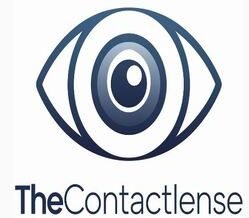For so many years people who are suffering from vision problem like farsightedness and nearsightedness also suffer from wearing eyeglasses with thick lenses. The glasses are quite heavy and the frames in general are not very attractive. Another problem encountered with the bifocal lenses is that it takes time to adjust; some people experience dizziness when they use this kind of lens. But now, with the advent of Bifocal Contact Lenses you can say goodbye to your old-fashioned eyeglasses.
People way back then that needs bifocal lenses has only one ultimate choice and that is to wear eyeglasses. They can’t use contact lenses since bifocal lenses aren’t available during that time. But now, it’s entirely different! You can now use contact lenses instead of using thick eyeglasses! Bifocal Contact Lenses are now available anywhere, they are made of rigid, soft and gas-permeable materials.
Who should use bifocal contact-lenses?
It is not only used by people who suffer from farsightedness and nearsightedness, this kind of lens is also recommended for someone who is suffering from a condition called “Presbyopia”.
What are the kinds of bifocal lenses?
- The Alternating Design
This is similar to bifocal eye glasses; half of the lens has power for near objects whilst half of it has distance powers. - The Asferic Design
 The near and distant visions are both located at the heart of the lens. The near correction is located at the center while the distance correction surrounds the former. It can be reversed though in certain situations. Your eye doctor can help you with that.
The near and distant visions are both located at the heart of the lens. The near correction is located at the center while the distance correction surrounds the former. It can be reversed though in certain situations. Your eye doctor can help you with that. - The Concentric Design
The concentric design is considered to be the radial of contact-lenses, generally, the lens is good for near vision but the outer part is good for distant vision or could be the other way around. - The Mono-vision Design
With this lens, the distance vision is normally worn in the dominant eye that has a distant problem. You don’t need to determine by yourself, an eye doctor will do it for you so you better seek help from a professional - The Simultaneous Design
This lens tries to mix with the powers of both near and distant sight prescriptions. They usually fill in the area of pupil. Your eyes would adapt as well as learn to elucidate the “circle-power-choice” largely dependent on how near or far you are from the subject. - The Translating Design
This design is almost similar to the bifocal eye glasses; the near correction is below the distance correction. There is a line that separates both lenses. The lens has a flat bottom design so that it won’t move once you start blinking.
These are the most common kinds of Bifocal Contact Lenses ask your eye doctor first before buying one for yourself.
If you really want to try these Bifocal Contact Lenses, there are few companies that offer free trials. Most of these companies are available online. You just need to invest some time in order to find the one that you are looking for.
The Bifocal Contact Lenses are also good for individuals who suffer from astigmatism. But before buying anything, consult your eye doctor first for safety precautions.

